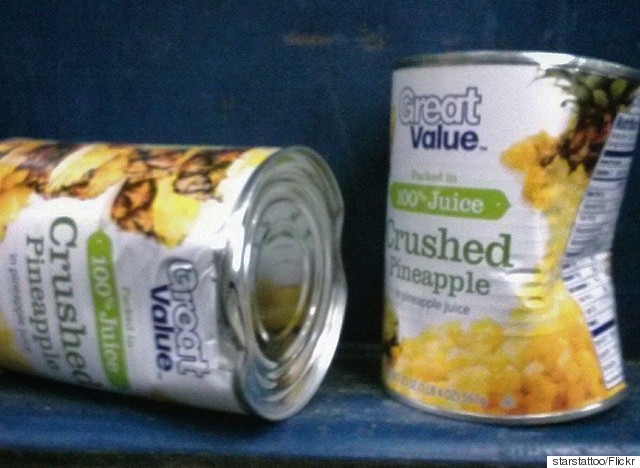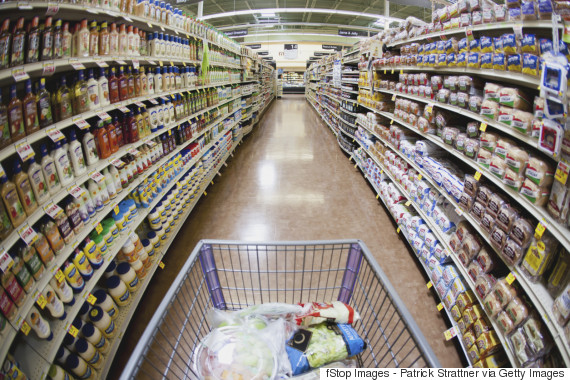According to a 2014 study by Feeding America, one in seven people in the U.S. receives food assistance from its nationwide network of 200 member food banks every year.
That’s 46.5 million people who need help putting food on the table -- while also struggling to balance other everyday necessities that many others take for granted, like nutrition, housing and health care. Even with help from generous organizations like Feeding America, families still face tough choices when it comes to providing the most nutritious food possible, with many resorting to coping strategies like watering down food and nutritious beverages to make them last longer.
Faced with this harsh reality of hunger that millions of Americans experience, we’ve partnered with The Great American Milk Drive to spotlight the difficult decisions people must make to keep their families going.
Save Money … or Eat Nutritious Food?
Although federal and charitable nutrition assistance programs are viable options for families experiencing food insecurity, some households still turn to alternative “coping strategies” to access necessary food. In many cases, these strategies directly impact health and nutrition. A 2014 study published in the Journal of the American Medical Association Internal Medicine found a decline in diet quality among lower income families.
Contributing to this decline is the fact that individuals -- in fact, 79 percent of Feeding America households – report buying inexpensive, nutritionally deficient food, as opposed to often pricier healthier options. That number rises to 84 percent for households including at least one child, making it the most common coping strategy for struggling families.
While favoring a price break over purchasing healthy foods may save money, extra pennies are not valid collateral for the health consequences associated with this game plan. Foods with low nutritional value and elevated fat, sodium and sugar content can lead to obesity, heart disease, diabetes, depleted energy levels and poor nutrition.
While some food banks, like the ones in Feeding America’s network, have introduced nutrition criteria for the meals served to clients, fresh items like milk and produce are still in high demand. According to a 2014 survey of Feeding America food banks, milk topped the list of food items most requested by food bank participants (85 percent of households listed milk as their priority). Yet due to the scarcity of milk donations, food banks are only able to provide less than one gallon of the nutrient-rich beverage –- the top source of calcium, Vitamin D and potassium in the diet -- per person, per year on average.
Put Money Toward Food … or Health Care? 
One in three Americans with a chronic disease -- like diabetes, arthritis or high blood pressure -- has trouble paying for food, medications, or both, according to 2014 study by The American Journal of Medicine.
This statistic illustrates an unfortunate irony of the health risks associated with poor nutrition: Essentially, cutting costs in one area (buying cheaper, less nutrient-dense foods) can ultimately lead to heftier health care bills for low-income households due to deductibles and uncovered services -- even those who have insurance can get hit by unforeseen fees.
Health challenges will continue to be a problem, as more than half of Feeding America client households’ surveyed reported having outstanding medical bills, and 24 percent reported at least one family member in poor health. In fact, 58 percent of households reported having a family member with high blood pressure, and 33 percent had a member with diabetes.
Buy Quality Food … or Buy a Larger Quantity of Food? 
Buying cheap, nutritionally devoid products isn’t the only coping strategy households use to secure enough food to feed their families. Over half of Feeding America client households cited buying food with dented or damaged packaging to save money and 40 percent reported watering down food or drinks to make them last longer, a strategy that can ultimately threaten the nutritional value of each item, and have lasting implications.
Nutritious foods and drinks can help lay the foundation for growing children and support adults as they improve their health, learn and perform their best. Watering down nutrient-dense foods and beverages like fruit, vegetables and milk to create larger serving sizes can jeopardize their health benefits.
Feed Your Family … or Manage Utilities, Transportation and Housing Bills?
Feeding America client households often live on limited budgets, meaning the struggle between paying for food and other everyday essentials is real and ongoing. For 69 percent of families, putting food on the table directly competes with the ability to pay for utilities. Similarly, feeding a family competes with affording transportation (for 67 percent of families) and even housing (57 percent).
For approximately one in three client households, unfortunate trade-offs like these occur every month, meaning basic needs are going unmet on a consistent basis. While educational expenses affect a lower number of families, 31 percent of households struggle between allotting funds toward food versus educational expenses for at least one family member at some point during the year.
Go Grocery Shopping … or Keep Your Personal Items? 
In a 2013 study by the United States Department of Agriculture, sixty-two percent of food-insecure households reported depending on one of more of the three largest federal food and nutrition assistance programs in the past month (SNAP; Special Supplemental Nutrition Program for Women, Infants, and Children (WIC); and National School Lunch Program).
However, while aide programs exist, more than half of Feeding America households look to food assistance from family and friends. Twenty-three percent grow their own food in a home or community garden to help alleviate the struggle of feeding their families.
When food-assistance programs, family outreach and community gardens aren’t enough, some families go as far as selling their personal items to fund their next trip to the grocery store. Thirty-five percent of client households reported selling or pawning personal items to make ends meet.
How Can You Help?
Unfortunately for families facing food insecurity, difficult decisions like these are not solved immediately. Fortunately there are ways you can help, such as donating nutritious, fresh foods that provide a variety of nutrients to food banks across the nation through programs like The Great American Milk Drive or volunteering across the Feeding America network or another food-assistance program.
The Great American Milk Drive is a national initiative to secure highly desired gallons of nutrient-rich milk for millions of families in need. Across the country and in your community, millions of families are missing out on milk and its nine essential nutrients, including eight grams of high quality protein per serving. Milk is an affordable, efficient way for America’s feeding programs to get nutrients into the hands of people who need it. Learn more about The Great American Milk Drive at milklife.com/give.